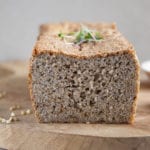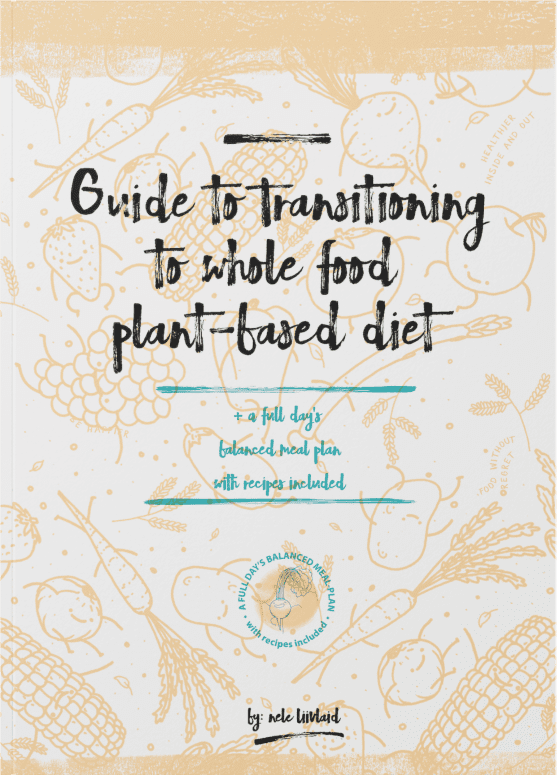Description
Learn how to make a delicious yeast-free gluten-free sourdough bread using buckwheat and quinoa groats. What’s the best is that you won’t need no starter! You’ll only need 3 ingredients (not counting salt and water).
Soaking time: 4-6 hours
Fermentation time: 4.5-5 hours
Ingredients
- 325g (11.5oz) raw buckwheat groats
- 100g (3.5oz) white quinoa groats
- 250g (8.8oz) filtered water
- 1/2 tsp. Himalayan salt
- 2 tbsps. dried oregano
Instructions
Soaking
- In a large bowl, soak raw buckwheat and quinoa groats for at least 4-6 hours. However, overnight is equally fine.
- After soaking, take a large sieve and thoroughly rinse the groats under running water. You’ll notice that the water is quite slimy. Not to worry though as it’s normal.
- Now, place the sieve in the mount of a large bowl to let it drain completely. It may take a few minutes.
Blending and Fermentation
- Take your soaked groats and transfer them into a large glass or ceramic bowl. Metal bowl will interfere with fermentation process.
- Next, add filtered water and process with either regular blender or an immersion blender. Unless you have a high-speed super-power blender like Vitamix, I’d suggest choosing immersion blender as your tool. It’s because I’ve found it easier to handle. In case you’re using Vitamix, be careful not to over-blend the mixture as you might end up with a bread that’s too dense.
- After blending, cover the bowl with a plastic or a clean kitchen cloth and place it into a warm oven. I turn my oven on to 30-35°C (86-95°F). In case your oven does not have this function, try with leaving the lights on. The lamps should produce some warmth on their own. Alternatively, leave the bowl in the sun or onto a radiator.
- After 4.5-5 hours your batter should have risen quite a lot and you should see bubbles throughout the batter. Check the video for visuals. In case you can’t use your oven, it’s not heating season and there’s no sun either, the fermentation will simply take longer. Be ready for about a 14-hour period depending on the room temperature.
- Be careful not to ferment the batter for too long though. If it smells foul or turns into a funny colour, I’d suggest you throw it out. You’ll learn what is the maximum time for fermentation in your kitchen by trial and error. However, in the beginning I suggest you follow the timeframe given in this recipe and observe the batter from time to time to catch the state you see in my video.
Mixing and Baking
- Now, gently fold in Himalayan salt and oregano. Try to avoid vigorous movements not to mess with the fluffiness of the batter.
- Next, pour the batter into bread tin lined with parchment paper. I used my handmade ceramic loaf (27x9cm, 10.6×3.5inch) which is not standard. I’d say you can go for 25x9cm (9.8×3.5inch) bread tin.
- Put the bread into cold oven, close the door and turn the heat onto 175°C (350°F). Make sure NOT to use the fast heat function and NOT to have the grill on. Set the timer to 1 hour and 15 minutes and wait.
- When the time is up, open the oven door and tap onto the crust of the bread with your finger. The bread is ready if it sounds hollow.
- Let the bread cool completely before slicing into it. This takes about an hour. Should you be extra impatient, 30 minutes is the minimum you ought to be able to wait.
Notes
You may sprout buckwheat and quinoa groats before blending the batter. Check instructions from blog post (above the recipe card).
- Prep Time: 15 minutes
- Cook Time: 1 hour 15 minutes
- Category: Bread
- Method: Oven
Nutrition
- Serving Size: 1/22 of the recipe
- Calories: 69 kcal
- Sodium: 51.7mg
- Fat: 0.8g
- Saturated Fat: 0.1g
- Carbohydrates: 11.6g
- Fiber: 2g
- Protein: 2.8g


